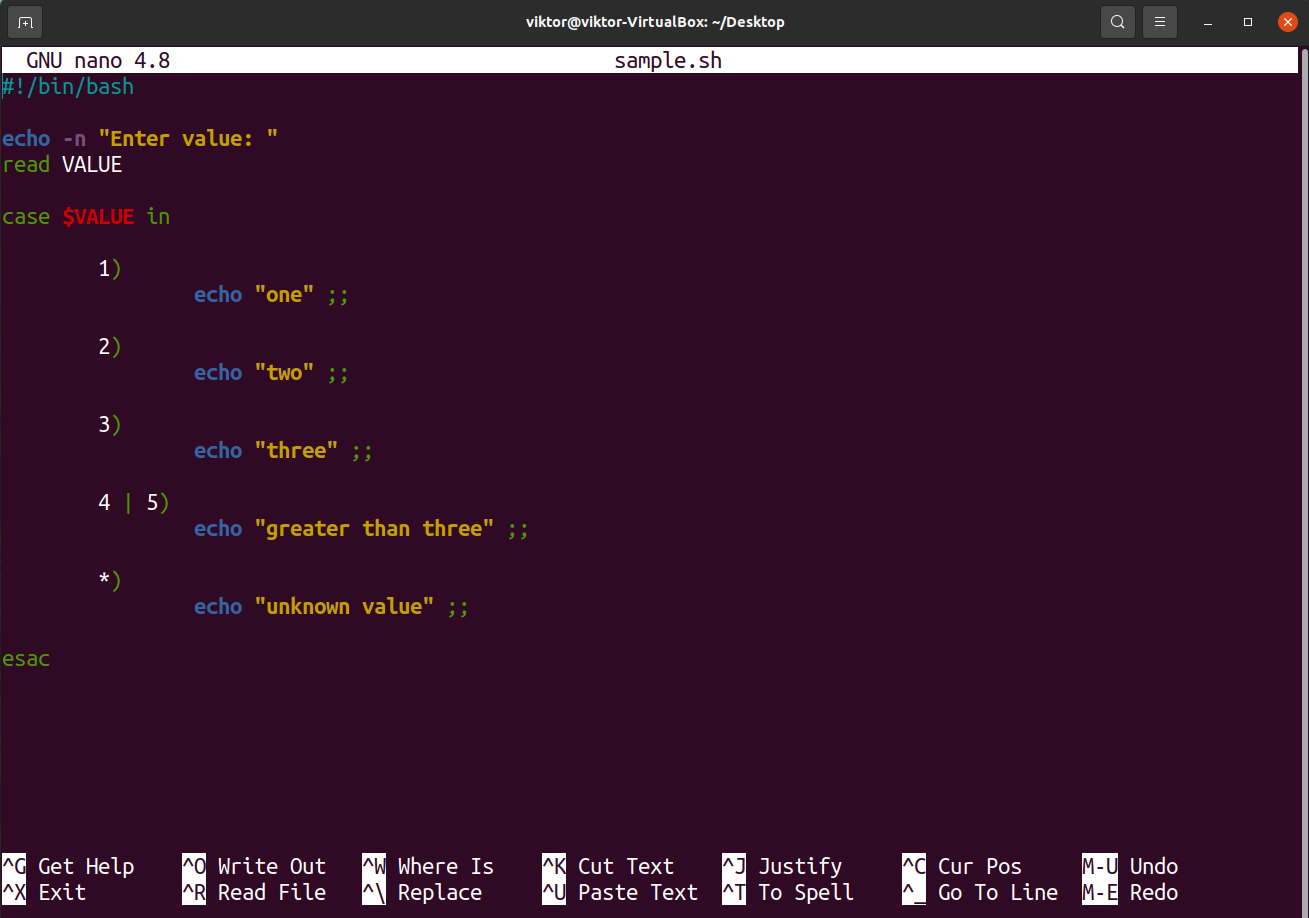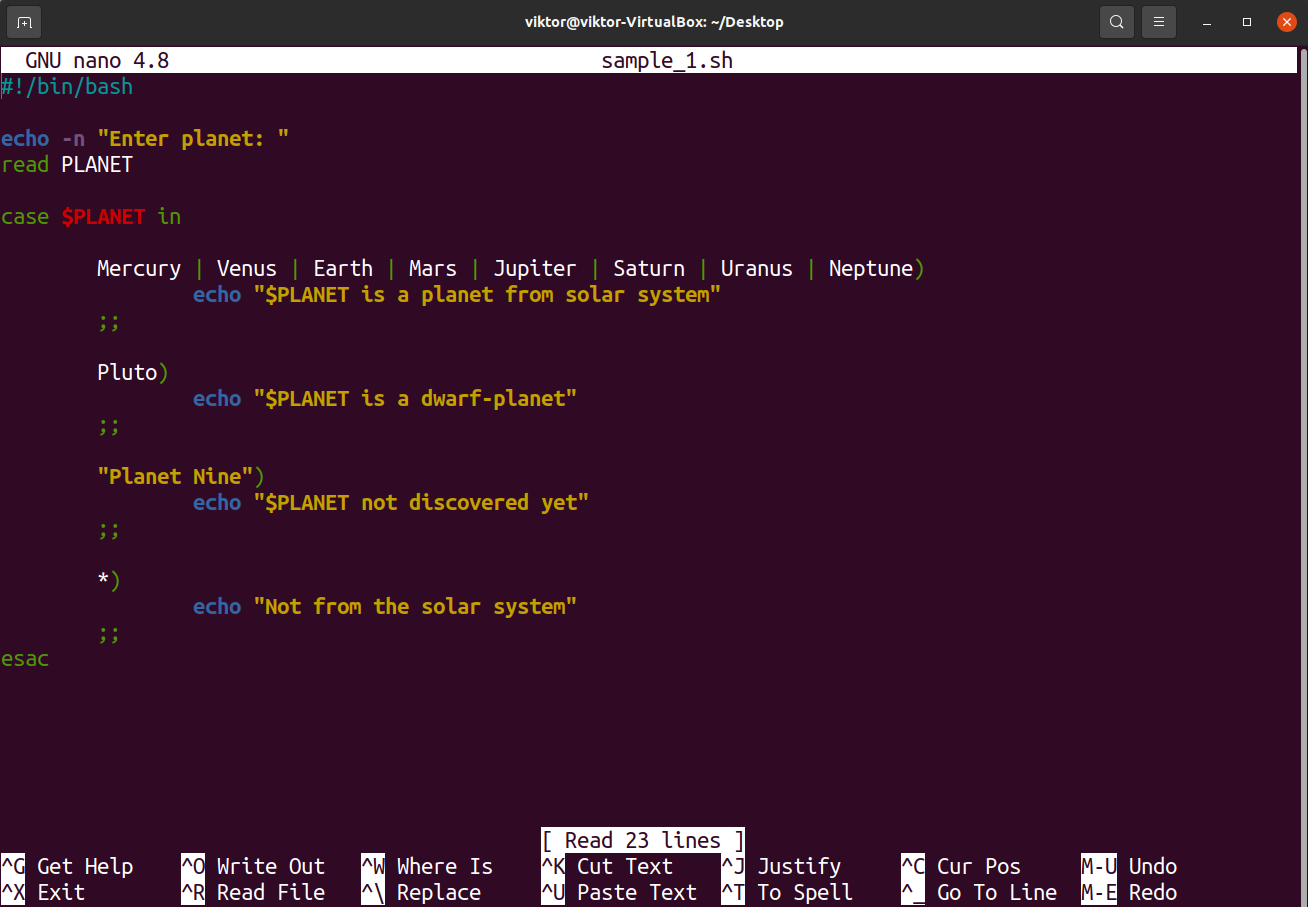In bash programming, the case statement helps to simplify complex conditionals when there are multiple different choices. Instead of using nested if statements, we can use the case statement instead to make the bash code more readable and maintainable.
The bash case statement shares similarities with JavaScript and C switch statement. However, the main difference is, once it matches a pattern, it doesn’t search for any additional pattern match.
This guide will cover the bash case statement basics with various examples.
Bash case statement
The fundamental structure of the case statement is as follows.
<pattern_1>)
statements
;;
<pattern_2>)
statements
;;
*)
statements
;;
esac
Here’s a brief breakdown of the structure:
- The case statement will start with the keyword “case” and end with the keyword “esac”, similar to how if conditional start with “if” and ends with “fi”.
- There can be multiple patterns separated by “|”. The “)” operator marks the end of the pattern list.
- Patterns can contain special characters.
- Once a pattern is matched, its associated commands will be executed. Together, it’s called a clause. Each clause must end with “;;”. It stops any attempt to match for further patterns.
- The wildcard (*) clause is a common practice to define the default case. It will always match the condition.
- If no pattern matches, then the case statement returns zero. Otherwise, it’ll return the exit value of the executed commands.
Having an understanding of the bash if-else statement is beneficial in understanding and mastering the bash case statement.
Bash case statement examples
Case statement using numeric values
Now that we know the basics, time to check it out in action. Have a look at the following script.
echo -n "Enter value: "
read VALUE
case $VALUE in
1)
echo "one" ;;
2)
echo "two" ;;
3)
echo "three" ;;
4 | 5)
echo "greater than three" ;;
*)
echo "unknown value" ;;
esac
Save the script. Mark it as an executable.
Now, run the script.
The script will ask to enter a value. If the value matches any of the patterns, it will execute the matching clause. If no match was found, then it will match the default clause.
Case statement using strings
In the next example, we’ll use strings to match values.
echo -n "Enter planet: "
read PLANET
case $PLANET in
Mercury | Venus | Earth | Mars | Jupiter | Saturn | Uranus | Neptune)
echo "$PLANET is a planet from the solar system"
;;
Pluto)
echo "$PLANET is a dwarf-planet"
;;
"Planet Nine")
echo "$PLANET not discovered yet"
;;
*)
echo "Not from the solar system"
;;
esac
The script will run just like the first example. It will ask for a planet name, check if the input matches any clause, and execute the matching clause.
If you examined carefully, you’ll notice that “Planet Nine” is the only value wrapped in quotes. It’s because there’s space in it. Using quotes, we’re telling the shell to treat it as part of a single pattern.
Case sensitivity in case statement
Note that in the last example, the input is case-sensitive. This is the default bash behavior. However, we can tell shell to run the script in case-insensitive mode.
To do so, add the following line at the start of the script.
The script should look like this.
Now, test the script. Enter the value with a different case.
Final thought
This guide covers the basics of bash case statements. It also demonstrates how to implement them in bash scripts. You should be comfortable using the case statement. Bash case statements are often used to pass parameters to shell scripts from a command line. For example, the init scripts use case statements to start, stop, and restart services. After reading this guide, you will be able to implement bash case statement in your scripts.
Happy computing!








